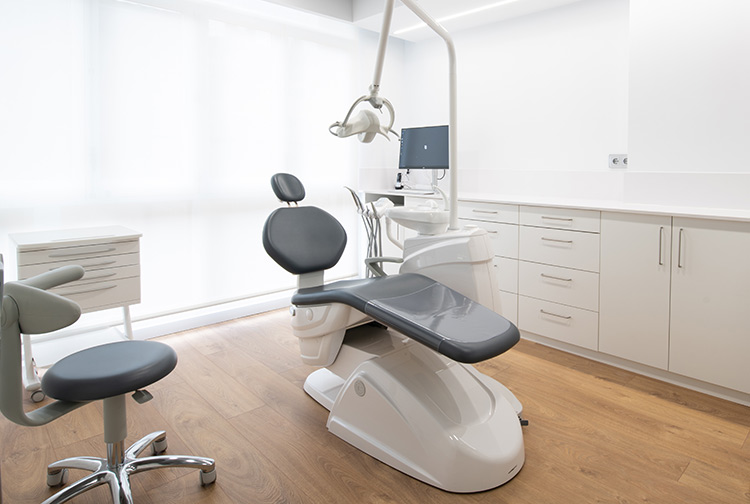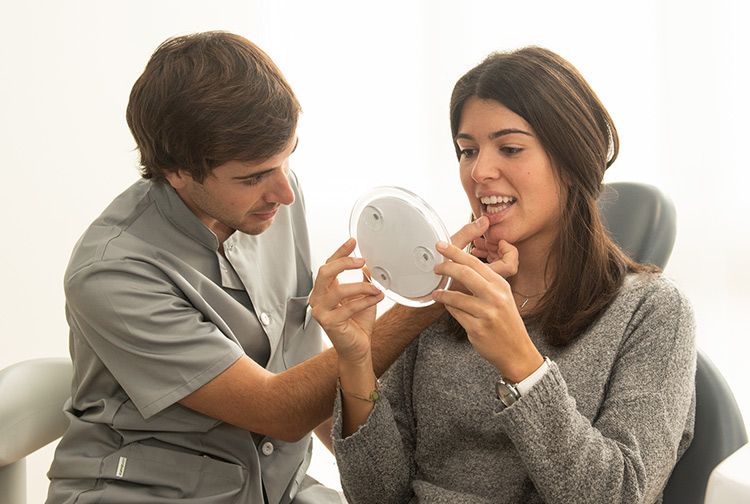CAMBRA BCN - CAMBRA NENS - CAMBRA BEGUR / ESP - CAT - ENG
Dental Clinic - Costa Brava - Begur - Contact 972 623 614
Dental Clinic - Costa Brava - Begur
CAMBRA BCN - CAMBRA NENS - CAMBRA BEGUR / ESP - CAT - ENG
Dental Clinic - Costa Brava - Begur - Contact 972 623 614
Dental Clinic - Costa Brava - Begur
Digital dentistry is applied to different specialties and offers clear advantages even before starting treatment thanks to digital diagnostic tools.

Dr. Victor Cambra, leads with the Cambra Clinic team, the application of digital technology in dental health and dental aesthetics.
Digital dentistry has brought a revolution in different specialties of dentistry. Specially in:

Digital dentistry is applied to different specialties and offers clear advantages even before starting treatment thanks to digital diagnostic tools.

C/ Ventura Sabater Nº6 Local 9 – 17255 Begur, Girona




Throughout a CBCT (3D xray) we can navigate through the teeth and evaluate precisely the presence of pathology, such as tooth decay, deformities of the roots, or gum and bone disease.
By merging the patients CBCT (3D xray) with thestl file of their teeth (3D render of teeth and gums) we can design the ideal scenario how the missing teeth should be replaced, and according to the ideal design, then plan where the implants that will hold the teeth should go.
Based on this 3D plan, the number and exact position of dental implants can be established precisely.
With this information a surgical guide can be designed. This guide will be used the day of the intervention to place the implants in the planned position in a less traumatic manner, faster and more importantly; without surprises. The success of an implant supported restoration relies on an adequate position of the elements holding the new teeth; the implants.

Traditionally, a tooth is designed analogically. Intraoral impressions are taken (measurements) using silicone pastes (somehow uncomfortable), from which a plaster duplicate of the patients mouth is obtained.
However, this silicone pastes can suffer morphological alterations due to temperature changes and or tears, that may lead into inaccuracies in the tooth design. Such inaccuracies will have to be fixed by the dentist manually.
The final tooth that we will place in the mouth usually has two components: a structural part made of noble metals, and an aesthetic part handcrafted by a ceramist.
Theprocessis similar to that of a porcelain plate, that is manually painted and molded by an artisan.
In the world of Digital Dentistry, measurements are taken with an oral scanner that allows us to replicate the patient’s mouth in three dimensions.
From here we design the teeth with a computer which allows us to generate a file with that design. Once we have the digital file, we must materialize that piece.
Thanks to monolithic materials such as Zirconia, we can manufacture the teeth in a single material.
It is no longer necessary to use metal and porcelain (although sometimes it might be indicated). Monolithic metals come in a single block from which the tooth is milled.
Therefore,instead of generating the tooth by addition (of metal and porcelain), we obtain it by substraction which makes it more rigid.
Although the artisan component does not have as much presence, it is still necessary to manually paint zirconia so it can replicate the patient’s anatomy.
The advantages are: greater precision, greater speed and reproducibility (in case of incidence, we can go back to “print” the tooth without having to take new measurements).
Also, when replacing the pastes with the intraoral scanner, the patient’s experience is much more pleasant.

Dental aesthetics is a growing concern among the adult population.
A way of getting a prettier smile it by repositioning and aligning our teeth.
Traditional braces offer an excellent result but they have negative aesthetic implications during the treatment since they are very visible.
Digital dentistry allows us to scan the patient’s mouth and manufactureclear aligners with the progressive movements that the patient needs to achieve the desired smile.
They are imperceptible to the eye and they can be removed to eat and to brush our teeth. Of course, they require the patient’s commitment and perseverance to get optimal results.
Digital technology allows a 3D simulation of possible improvements of the patient’s smile based on the Golden Proportions.
Such design is done based on the patient’s face, which offers multiple advantages: The patient can make the necessary modifications before starting, becoming “co-designer of his smile”.
The anxiety related to the uncertainty of the final result is reduced.
We can anticipate the appearance that the patient will have, which favors an adjustment of his/her expectations.
It also improves patient-dentist communication and empowers illustration of any treatment proposals.
All these aspects are part of what we could call Emotional Dentistry. Lastly, technology helps us connect more with our patients, making the trip to a healthier and better looking smile more confortable.
Contact our team of dentists to get more information on our dental treatments. Call us to get answers to your questions about dental treatments or to request your 1st Free Appointment.
C/ Ventura Sabater Nº6 Local 9 – 17255 Begur, Girona
Thank you for contacting us!





Dental clinic on the Costa Brava, with digital dentistry.
TREATMENTSDental clinic on the Costa Brava, with digital dentistry.
TREATMENTS